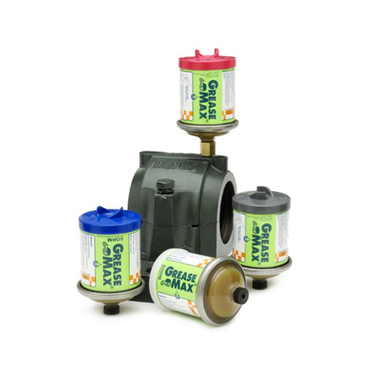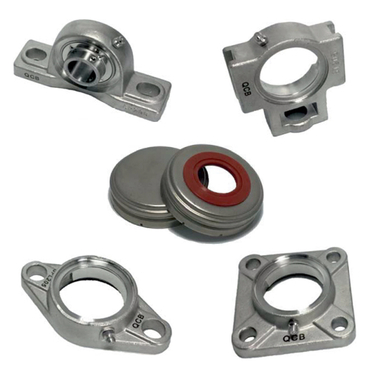What Is the Difference Between Adapter and Withdrawal Sleeves?
In the context of industrial machinery, the optimum performance and lifespan of a machine greatly depends on the correct fitting and removal of the bearing parts. Adapter and withdrawal sleeves are two critical components that facilitate this process. While both serve similar purposes in mounting bearings onto shafts, their design, application, and removal methods differ significantly. Understanding these differences is vital for ensuring correct bearing installation and maintenance.
Adapter Sleeves: The Mounting Solution
Adapter sleeves are tapered sleeves used to mount bearings with a tapered bore onto straight shafts. Basically, these components are cylinders having a tapering outer surface and a straight inner bore that is in alignment with the shaft diameter. Adapter sleeves, when installed, create a secure fit between the bearing and shaft.
The basic role of adapter sleeves is to provide a means of mounting bearings without requiring a tapered shaft. This simplifies the design of machines, such that, during manufacture, a great deal of machining does not have to be done to produce a tapered shaft as in precision engineering turned shafts.
The operation of adapter sleeves depends on a rather simple principle: as the sleeve is pushed onto the shaft and into the bearing’s tapered bore, the sleeve expands slightly which creates a tight, gripping fit. This fits aids in maintaining control of the bearing during operation.
Most adapter sleeves possess a thread and locknut system at one end, aiding in the controlled mounting and positioning of the assembly. The locknut pushes against the inner ring of the bearing which drives it up the taper of the expanding sleeve, which expands to obtain the required fit.
Withdrawal Sleeves: The Option Designed for Easy Removal
In contrast, withdrawal sleeves are designed specifically with ease of removal in mind. They possess a tapered outer surface as well as a straight inner bore, just like adapter sleeves, however, these sleeves are placed in the opposite direction of adapters.
Withdraw sleeves have a distinctive feature at their threaded end. Their unique design specifically extends beyond the bearing which ensures more freedom when dismounting the bearing without damaging the shaft or the bearing.
Withdrawal sleeves find their primary use in regions where there are likely to be frequent bearing removals, or where space is too small to allow other alternate mounting systems. They have their specific areas of advantage in cases when the bearings need to be replaced or serviced frequently.
To install the assembly, the withdrawal sleeve is first set onto the shaft and then the bearing is fitted over the sleeve. The tapering of the sleeve generates the required bounding fit while the bearing is being pushed on.
The Main Changes in Application and Usage
The difference in these two types of sleeves pertains to their order of mounting and how removal is conducted:
- Order of Mounting: Adapter sleeves are put on in line with the bearing while withdrawal sleeves are placed on from the opposite side.
- Removal Procedure: While a hydraulic nut or mechanical puller is likely to be needed with adapter sleeves, withdrawal sleeves can be removed via their threaded end with just a standard wrench.
- Uses: Adapter sleeves are known to be extensively used in permanent and semi-permanent fittings while withdrawal sleeves are more advantageous in systems needing regular maintenance or periodic replacement.
- Space Constraints: Adapter sleeves usually have a more compact design than withdrawal sleeves. Because of the extended threaded portion, they usually require additional axial space.
Manufacturing and Materiall Factors
Withdrawal and adapter sleeves are usually made from materials with suspension quality and precision machined into the right form like high-quality steel. Performance and lifespan of the bearing assembly heavily rely on the precision combination of material quality and thorough manufacturing.
Right Sleeve Selection
Choosing the right sleeve to use mostly depends on whether you want to use adapter or withdrawal sleeves depending on these factors:
- Construction and specifications of the shaft
- Load characteristics
- Available room in the assembly
- Environmental factors
- Bearing removal frequency
Adapter sleeves are better for permanent installations as they are locked in place with nuts. They can alternatively be installed in reverse, but the withdrawal sleeves are intended to be removed with ease. Specific requirements largely determine selection, and emphasis should be placed on space restrictions, ease of assembly, and application complexity. And here at Bearing Revolution, we have a range of adapter sleeves, and withdrawal sleeves for your desired purpose – at the most affordable prices online.




